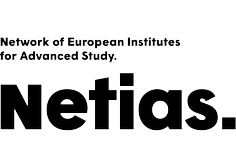Dr. Katja Arndt:"Perturbing Protein-Protein Interactions with Interfering Peptides (iPEP): Co-Evolution of Affinity and Specificity and Implications for Systems Biology"
| Wann |
23.02.2009 von 11:15 bis 12:15 |
|---|---|
| Wo | FRIAS Seminarraum, Albertstr. 19 |
| Name | Britta Küst |
| Kontakttelefon | +49 (761) 203 97418 |
| Teilnehmer |
Universitäts öffentlich |
| Termin übernehmen |
|
Dr. Katja Arndt
Junior Fellow of the Freiburg Institute for Advanced Studies
Perturbing Protein-Protein Interactions with Interfering Peptides (iPEP): Co-Evolution of Affinity and Specificity and Implications for Systems Biology
Protein-protein interactions are key for virtually all cellular processes and play important roles in numerous diseases. Consequently, peptides targeting oncogenic proteins are of utmost therapeutic interest. Yet, the energetic determinants driving specific protein-protein interactions are not entirely understood. We use rational design in combination with in vivo and in vitro selection systems employing competitive and negative design aspects. This results in interfering peptides (iPEPs) specifically directed against the pro-tein-protein interaction domain of transcription factors such as Jun, Fos, Myc and AF10. Molecular properties of selected and wild-type sequences were analyzed and compared by kinetic and thermodynamic means, and such quantitative data should help model their complex behavior in integrated networks. Initial cellular assays validated the ability of these peptides to mask protein interaction interfaces and thus selectively target spe-cific protein functions in physiological and disease states.
In a further approach, we develop DNA nano-breadboards in collaboration with the School of Soft Matter Research. DNA origami has been applied to fold long single-stranded DNA molecules into predefined shapes by the use of small complementary oligonucleotides. Modification of these oligonucleotides offers the ability to add a wide variety of functions at a 6 nm grid to serve as molecular ruler for e.g. analysis of recep-tor activation..





